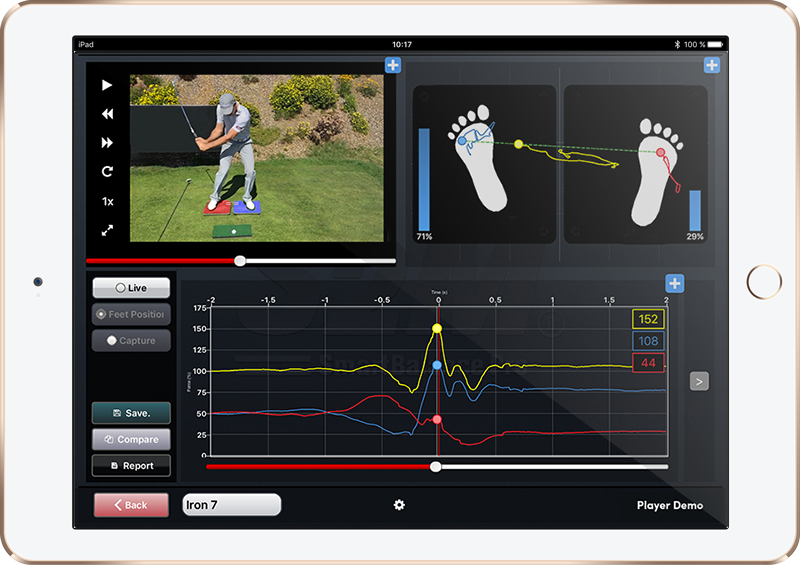The difference between Pressure & Force
In Physics, the force is basically defined as the interaction making one point or one object changing its motion. The equation is F=m.a. with Force (in Newton) equal mass (in Kilogram) by acceleration (in meter/second²). The pressure is defined as a force applied to a perpendicular surface per unit of area. The equation is P= F/S. with Pressure (in Newton) per meter square or Pascal (Pa) equal Force (in Newton) divided by Surface (in meter square).
So in physics, if you have the exact pressure of one all surface, you can add all the pressure values and you have the total force perpendicular to this surface.

So on the paper, a pressure plate and a force plate must measure exactly the same data concerning the vertical force.
The problem does not come from the Physics, but from the type of sensor.
Compare to a force gauges, a pressure sensor is less responsive and has a very limited range and precision.
In other words, even if you have thousands of pressure sensors in a pressure mat, every pressure sensor has its own limitation, and if you overload the capacity of measurement of one sensor, you missed the real value applicate to this point. And you multiply this error by all sensors in the same case.
The change of pressure will be also detected slower than with a force gauges, it means you will be limited in quantity of information you can measure per second: maximum around 100hz with very good pressure sensors, far over 1000 hertz with force gauges. This will affect the precision in maximum vertical force measurement, probably a lot under evaluated when the maximum of vertical forces is applied on a small area/ supporting surface
This also directly affect the precision of the Centre of Pressure calculation, depending on the vertical forces, which degrade its accuracy…
- The weight distribution between each foot will be similar between the two types of product.
- The Centre of Pressure trace will be more accurate with forces gauges, but the tendency is comparable.
- The vertical forces, especially at the maximum vertical forces applied by the player, will not be precisely measured with a pressure sensor and a lot under evaluated, while a force gauges will precisely measure it.
- The change of vertical forces applied will be detected a lot faster with a force gauges than with a pressure sensor.
Weight distribution and Centre of Pressure path indicates the state of balance of the player during the swing. Even if the measurement tool is not perfectly precise, the general tendency will be always good enough to work on balance of the player during its motion.
But, if you want to analyse the capacity of power, the explosiveness of muscular profile, when the player is charging and release its vertical force, in one word: how he creates forces to generate its motion? Then only a force plate could give you these data.
And if you want to go further and analyse at the same time the 3d kinematics of the player, you will need to know the interaction of forces created through the ground and the part of forces created by the upper body muscles and as well the effects of the club acting on the body.
But here it’s starting to be a question for science, Laboratory and Biomechanists.
